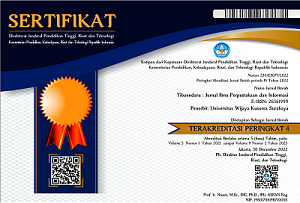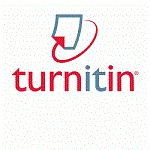Women's Literacy in Using Digital Media Information
Abstract
Purpose Research. Indonesian women have low digital literacy skills, and data from 2022 shows that only 34.7% have good literacy skills. 54.6% of Indonesian women receive hoax messages compared to men, while cyberbullying shows 39.2% occurs in women. This causes women to be less confident in accessing the internet. This research aims to analyze women's literacy levels in utilizing digital information media, identify the challenges they face, and explore the impact of cyberbullying on women to formulate strategies for increasing digital literacy that are safer and more inclusive. Research Method. The research combines qualitative and quantitative methods with data collection through in-depth interviews, online surveys, and social media content analysis. Data Analysis. The research sample consisted of women with various social, economic, and educational backgrounds who actively use social media. Results. The results of the study are expected to provide insight into the level of social media literacy among women, the challenges they face, and effective strategies to improve this literacy. In addition, this study also aims to identify the role of social media in strengthening or inhibiting women's empowerment in various sectors of life. Conclusions. This research is expected to contribute to the development of more inclusive and gender-sensitive social media literacy education programs and provide policy recommendations to support more active and critical involvement of women in the digital world.
Â
Keywords: women, social media literacy, empowerment, digital mediaFull Text:
PDFReferences
Adam, A. (2021). Perempuan Dan Literasi Di Era Digitalisasi. AL-WARDAH: Jurnal Kajian Perempuan, Gender dan Agama, 15(2), 251-261.
Belezas, F and Daniel, A. (2021). Innovation in Pandemics: A Netnographic Approach To The Sharing Economy Contributions. J Sci Technol Policy Manag.
Castells, M. (2000). Toward a sociology of the network society. Contemporary sociology, 29(5), 693-699.
Faderman, L. (2022). “The Struggle to Transform Woman into Citizen.†In Woman: The American History of an Idea, 168–97. Yale University Press. https://doi.org/10.2307/j.ctv2bfhhfs.10. 10.21009/Communicology.051, July 2017, http://journal.unj.ac.id/unj/index.php/communicology/article/view/2669.
Faderman, L. (2022). “Woman Enters the Public Sphere: The Nineteenth Century.†In Woman: The American History of an Idea, 86–114. Yale University Press. https://doi.org/10.2307/j.ctv2bfhhfs.7.
Fadilla, N. (2020). Kesenjangan digital di era revolusi industri 4.0 dan hubungannya dengan perpustakaan sebagai penyedia informasi. Libria, 12(1), 1-14.
Haraway, D. (2013). Situated Knowledges: The science question in feminism and the privilege of partial perspective 1. In Women, science, and technology (pp. 455-472). Routledge.
Harwati, T., & Septiana, I. (2023). Pendidikan Gender Dalam Keluarga: Peluang dan Tantangan Di Era Digital. Sharia and Law Proceedings, 1(1), 171-182.
Hudaefi, F.A and Beik, IS. (2021). Digital ZakÄh Campaign In Time Of Covid-19 Pandemic In Indonesia: A Netnographic Study. Journal Islam Mark. 12(3):498–517.
Katadata. (2022). Data Perempuan Memiliki Literasi Digital. Survei Katadata Insight Center. Dapat diakses dalam https://kic.katadata.co.id/
Kholil, K. L. R., & Budiantoro, W. (2022). Cyberfeminisme: Pembebasan Psikologi Perempuan di Ruang Digital. KURIOSITAS: Media Komunikasi Sosial dan Keagamaan, 15(1), 97-121.
Kominfo. (2022). Kementerian Informasi dan Informatika. Data Perempuan. Dapat di akses dalam https://www.kominfo.go.id/
Kozinets, RV and Handelman, J. (2024). Ensouling Consumption: A Netnographic Exploration Of The Meaning Of Boycotting Behavior. Hutchinson JWA& JW, Pedoman Pelaksanaan Penelitian dan Pengabdian kepada Masyarakat Tahun 2024 | 13 editor. Vol. 25. ACR North American Advances. Provo, UT: Association for Consumer Research. 1998. 475–480 p.
Kumar, B and Dholakia, N. (2022). Firms Enabling Responsible Consumption: A Netnographic Approach. Mark Intell Plan. 2022;40(3):289–309. 20. Kozinets R. Netnography: Doing Ethnographic Research Online. 1997. Sage Publications.
Reid, E and Duffy, K. (2018). A Netnographic Sensibility: Developing The Netnographic/Social Listening Boundaries." J Mark Manag. 2018;34(3–4):263– 86.
Rubyatomo, AP. (2023). “Self-Acceptance Beauty Bullying Sebagai Media Refleksi Dalam Proses Cinta Terhadap Diri.†Joged; Vol 21, No 1 (2023): APRIL 2023. 49-70 ; 2655-3171 ; 1858-3989 ; 10.24821/Joged.V21i1. May 2023. https://journal.isi.ac.id/index.php/joged/article/view/9662.
Sholehudin, R. E., & Sulastri, R. (2024, January). Kekerasan Terhadap Perempuan Di Media Online. In Gunung Djati Conference Series (Vol. 39, pp. 24-30).
Silitonga, M. S., & Zatira, N. H. (2023). Tantangan dalam Membentuk Pemimpin Perempuan yang Memiliki Literasi Digital di Indonesia. Dinamika Governance: Jurnal Ilmu Administrasi Negara, 12(4/Januari).
Stellarosa, Y and Iwanti, D. (2017). “Strategi Komunikasi Ikatan Wanita Gemuk Indonesia Sebagai Wadah Motivasi Wanita Plus Size.†Communicology: Jurnal Ilmu Komunikasi; Vol 5 No 1. Communicology: Jurnal Ilmu Komunikasi, Volume 5 No 1 Juli 2017. 41-59 . 2580-9172 . 2339-1480.
Wahyuningtyas, N., & Adi, K. R. (2016). Digital Divide Perempuan Indonesia. Jurnal Sejarah dan Budaya, 10(1), 84-92.
DOI: http://dx.doi.org/10.30742/tb.v8i2.4040
Refbacks
- There are currently no refbacks.

This work is licensed under a Creative Commons Attribution-NonCommercial 4.0 International License.
Tibanndaru: Jurnal Ilmu Perpustakaan dan Informasi is indexing by:
Â
Reference Management Tools
 
![]()


.png)






